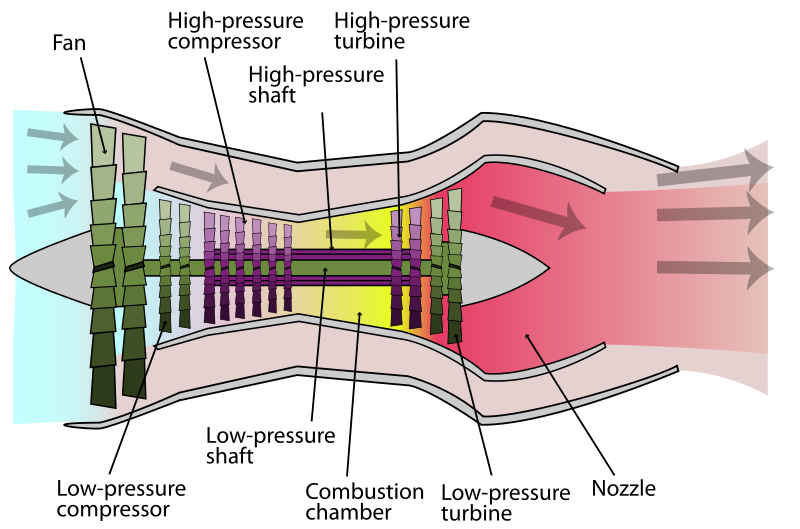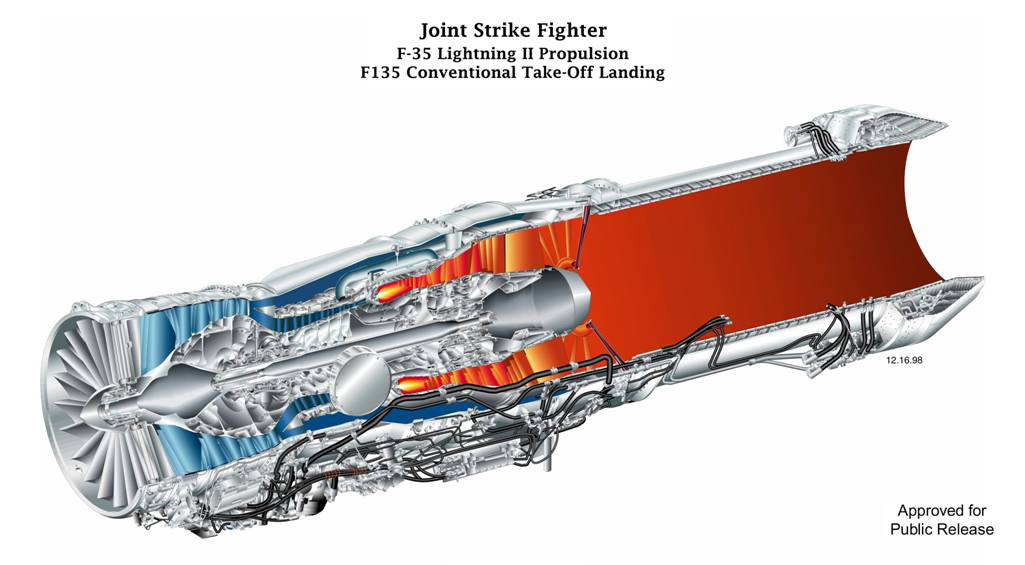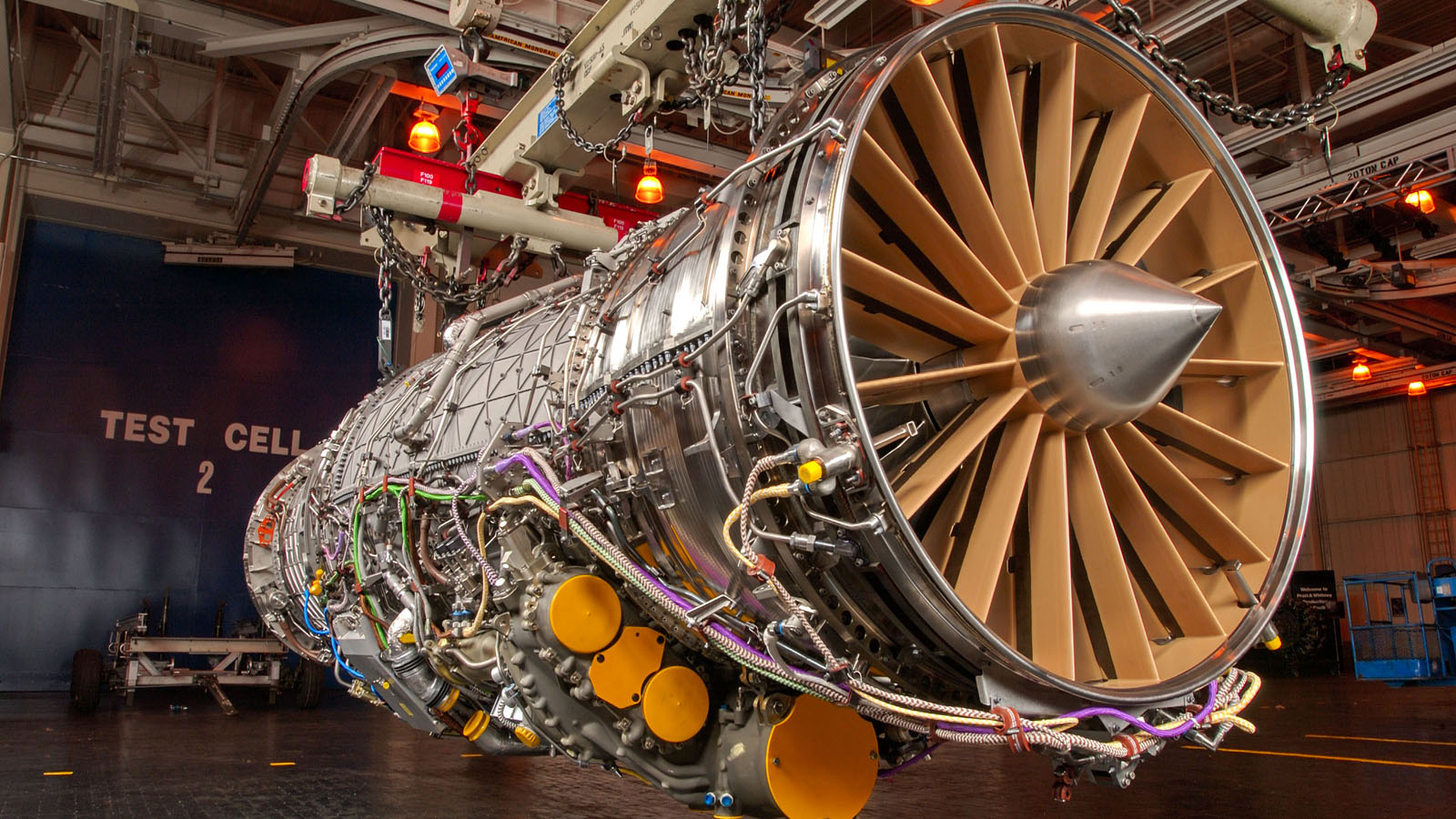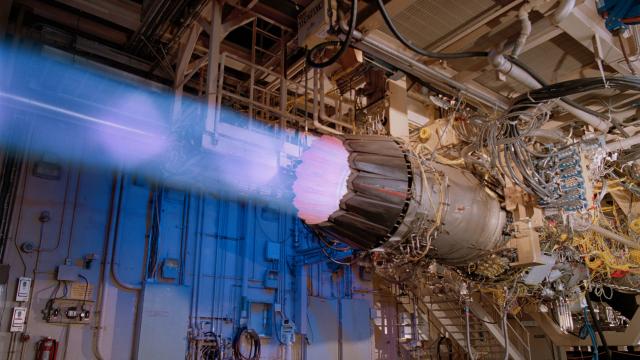Unlike commercial airliners, modern military aircraft are subjected to ever-changing flying conditions — from high-thrust takeoffs to flying at altitude to combat manoeuvres. So why are they outfitted with engines that perform optimally in only one of those flight envelopes? For the next iteration of the F-35 Lightning II, Pratt and Whitney is developing an engine that performs at its best no matter what’s required of it.
Turbofan technology is the backbone of modern aviation, using a pair of air streams to propel everything from commercial airliners to jet fighters far faster than any propeller could. The problem is that the dual air stream design limits the engine’s efficiency to a single speed point. That’s why commuter jets can’t go supersonic, and fighter jets are terrible at low-speed cruising.

Turbofans are air-breathing jet engines that use a large fan at the front of the engine with a smaller gas turbine engine core behind. The fan pushes air both into the core as well as a bypass duct that surrounds it. There are some variations to the basic design, of course, as military jets use more and smaller fans while commercial airliners use a single larger fan. “You can design turbofan engines off of that single design point but you are not operating at your best performance and typically what you end up giving up is efficiency,” Jimmy Kenyon, Pratt & Whitney’s Next Generation Fighter Engine General Manager, explained to Gizmodo.
He continued:
If you look at the evolution of the turbine engine over time, we started out with turbo jets, and they had what we call a single stream. So the air flowed into the compressor, then went into a combuster, burned, and then exited out the turbine. The turbine actually drives the compressor so it’s something that can keep itself sustained and going. And at the time it was considered a very efficient way of doing business.
Later on, we introduced what we called the turbofan. And what the turbofan did was it added an extra turbine on the back end of that turbojet (now called the core), but it added a turbine on the back end of that, and added a big fan up in front. That extra turbine drives that extra fan, but what that allows you to do is, part of the air that comes in the front goes through the core just like it did before, but a part of the air goes through the fan and then passes by the rest of the engine.
The super-hot compressed exhaust coming from the core then pushes this cooler, denser bypass air to generate the thrust. The ratio of the two streams is called the bypass ratio and it’s this ratio that determines the engine’s efficiency envelope.
For high-performance engines like the Pratt & Whitney F135 powering the F-35 Lightning, the bypass ratio is very low — that is, it uses mostly jet thrust from the core in relation to the bypass stream — hence the term, low-bypass turbofan. Long-haul engines, such as the GE-90 that powers the 787 Dreamliner and military cargo jets, instead utilise more fan thrust from the bypass than jet thrust from the core and are referred to as a high-bypass turbofan.
But what if you could make an engine that performs equally well at both low- and high-bypass ratios? That’s exactly what Pratt & Whitney is attempting with its Adaptive Engine Development Program for the upcoming sixth-generation F135 turbofan.

“What we are looking at with adaptive engines are engines that can operate at multiple design points across a range of flight envelopes while maintaining optimal operating efficiency,” Kenyon said.
This adaptive cycle engine will utilise a secondary bypass stream (three air streams in total) to act much like the gearing on a car’s transmission, allowing the F135 engine to adjust and match its bypass ratio at will, whether it’s high-thrust takeoffs or high-efficiency cruising at altitude. “That third stream is something that we have the ability to modulate, to change the conditions of that flow,” Kenyon told Gizmodo. “How much flow, and flow characteristics so that we can kind of optimise the bypass ratio over the flight envelope.”

Kenyon further explained:
On top of that adaptive fan we’re also making improvements, tremendous improvements in the core system as well. We’re putting in a higher pressure ratio, higher efficiency compressor, leveraging a lot of our advanced commercially-derived, 3D aerodynamic design capability…We’re looking at increasing the temperature capability and the efficiency of the turbine stages, and then we’re also looking at the exhaust system. Having that adaptive third stream allows us to work with that stuff as well…we’re making improvements to the efficiency of the core engine, but we’re also using the adaptive architecture to give us a lot more design options in terms of how we can manage the engine over the flight envelope.
These improvements should translate into marked improvements in the engine’s overall fuel efficiency on both sides of the sound barrier. What’s more, the new system is expected to offer superior heat sinking abilities that will reduce the plane’s thermal signature while further improving its stealth capabilities. You know, just in case the F-35 wasn’t deadly enough as it is. [Wikipedia – Pratt & Whitney 1, 2, 3]
